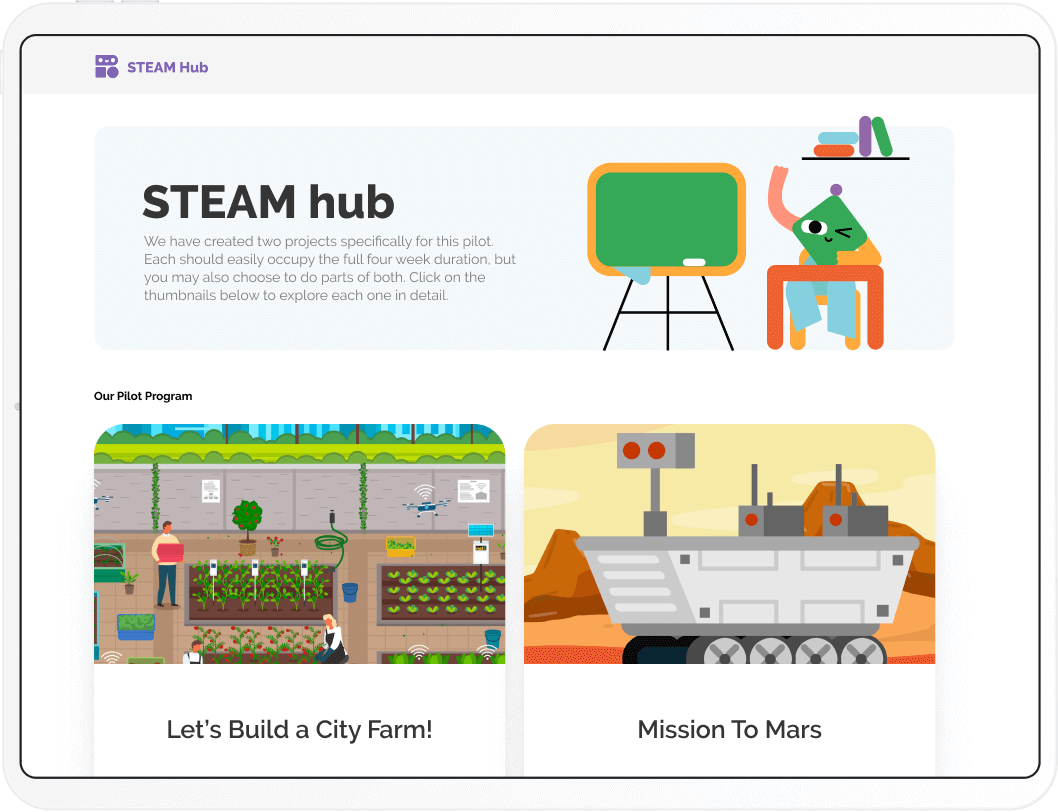
How to solve problems through creative play
.png)
Who couldn’t use a few tips on problem-solving? Our curriculum teaches kids to do this mindfully from very early on.
We all encounter countless problems throughout our daily life. More often than not, they seem much worse when we’re trying to handle them than in retrospect. But how do we remain calm and wise enough to come up with a sensible solution that works? And how do we do this by ourselves? It takes a lot of training, thinking and reflecting – whether it’s a conflict about a toy or a job task you’re struggling with. But the essence of it remains the same.

Three steps to problem-solving
The first important thing to note to children is that problems are common, they are normal, and they should be openly discussed. The kids must know this in order to move forward.
Once you have established this fact, another equally important one comes up second. If you’re encountering problems, ask for help or advice. As a teacher, validate their problems instead of brushing them off as meaningless.
Thirdly, let them figure things out on their own. As difficult as it might be to watch, struggling and failing is a vital step in reaching the solution. Give them tools to do this, but don’t do it for them, as that would teach them very little.

Problem-solving through creative play
As children embark on programming missions with Robo, they are bound to fail at some point. For instance, their code contains a mistake, Robo does not perform the way the imagined because they misplaced a block, and so on. This is okay, we teach them, and we also teach them how to handle and solve these problems while also handling their feelings.
The intuitive blocks that Robo is made up of are the perfect tools in this process, but any other tools that the child choose itself based on its interest also work fine, even puzzles and dress-up clothes. However, they should be the ones to choose what interests them.

The curriculum as a tool
The problem-solving process in our curriculum is made up of 8 steps and encouraged with every Robo Wunderkind project. These include:
Step 1: Identify the reason for this Robo project and be able to explain it. What are we going to solve by it?
Step 2: Brainstorm. What are the solutions for this problem? Try to get as many as possible, but don’t assess them yet, they don’t all need to be good.
Step 3: Evaluate and choose one solution. Think about what will happen if you implement them, weigh the pros and cons, discuss them. Choose the one that is best.
Step 4: Sketch and plan. Think beforehand of what you will need to implement your chosen solution. In this case, choose Robo’s modules or other materials necessary for the project.
Step 5: Work on the solution. Put the blocks together, program Robo, test it, see what happens, and repeat the process until you reach your desired outcome. Do not lose motivation and remember that problems by default are not easy to solve.
Step 6: Finalize. As soon as you’ve found the best solution, finalize it. Create the ideal environment for Robo or customize it and check that everything’s ready for presentation.
Step 7: Present the solution. Show your project to the class and ask for their feedback.
Step 8: Reflect. As soon as you solve the problem, look back on the process and analyze it. What went well, what didn’t? What can you do differently next time?

You can easily see that this set of steps doesn’t just apply to a Robo project. Although specifically created for children between 5-12, it’s universal and relevant for most of the procedural challenges that people might face with different tasks. Especially if they’re looking for an effective solution to a recurrent problem.
That is why we aim to teach this at such a young age and hope that by the time these children grow up, effective problem solving will be a breeze to them.
“
Love What You’re Reading?
Subscribe to our newsletter to get more just like it, sent straight to your inbox.
Gefällt Dir, was du liest?
Melde dich für unseren Newsletter an, um weitere Informationen direkt in deinem Posteingang zu erhalten.














.png)
%20(1).png)

